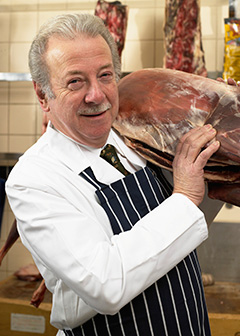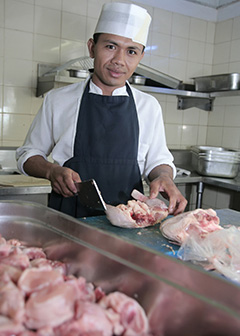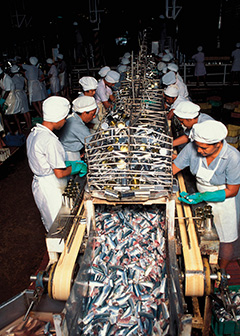Summary

| Quick Facts: Food Processing Occupations | |
|---|---|
|
$23,950 per year
$11.51 per hour |
|
| Less than high school | |
| None | |
| See How to Become One | |
| 311,300 | |
| 12% (About as fast as average) | |
| 37,400 | |
What Food Processing Occupations Do
Food processing occupations include butchers and meat cutters; meat, poultry, and fish cutters and trimmers; and operators and tenders of roasting, baking, and drying machinery. These workers cut, trim, or otherwise process food items, such as meat, or nonfood items, such as tobacco, for retail sale.
Work Environment
Workers in food processing occupations work in grocery stores or food processing facilities. All of these occupations require strenuous activity and may include exposure to hot or cold temperatures and dangerous equipment. Nearly all workers in food processing occupations work full time.
How to Become a Food Processing Worker
There are no formal education requirements for workers in food processing occupations; workers receive on-the-job training. Butchers usually enter the occupation after getting experience in a position such as a meat cutter in a grocery store or a line worker in a meat processing facility. Food preparation workers may need to be certified by the appropriate governmental agency to ensure conformity with health standards. Education and training for certification will most likely be carried out on the job.
Pay
The median annual wage of food processing occupations was $23,950 in May 2010.
Job Outlook
Employment of food processing occupations is expected to increase by 12 percent from 2010 to 2020, about as fast as the average for all occupations. Population growth and international trade will increase demand for these workers.
Similar Occupations
Compare the job duties, education, job growth, and pay of food processing occupations with similar occupations.
O*NET
O*NET provides comprehensive information on key characteristics of workers and occupations.
Contacts for More Information
Learn more about food processing occupations by contacting these additional resources.








